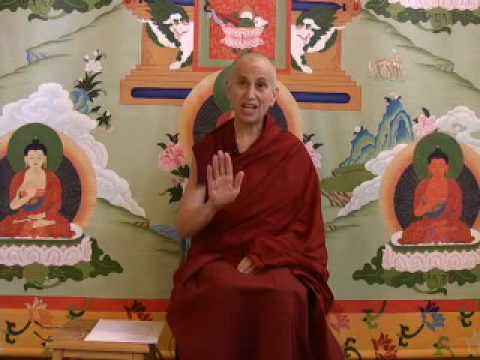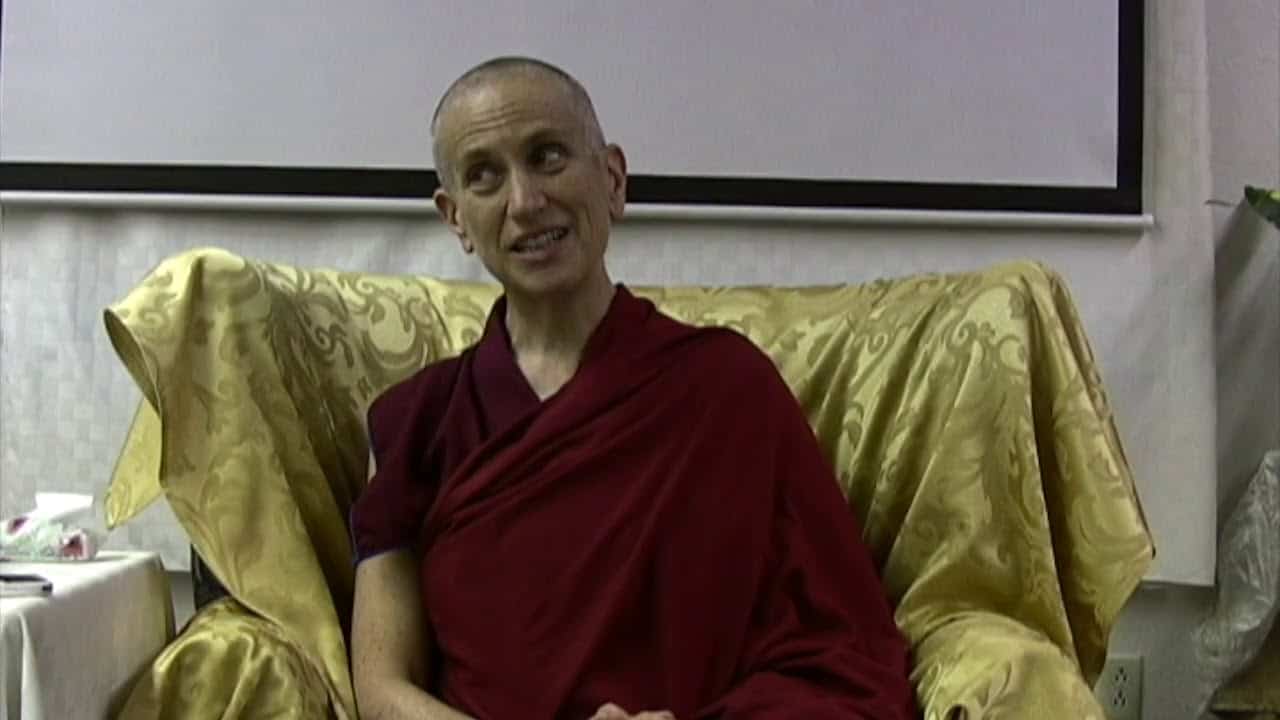Verse 22-2: Toward the welfare of all beings
Verse 22-2: Toward the welfare of all beings
Part of a series of talks on the 41 Prayers to Cultivate Bodhicitta from the Avatamsaka Sutra (the Flower Ornament Sutra).
- Much of Dharma practice is simply familiarity with different things
- Mindfulness and introspective checking
41 Prayers to cultivate bodhicitta: Verse 22-2 (download)
Verse 22 says,
“May I walk toward the welfare of all beings.”
This is the practice of the bodhisattva when placing the foot down.
It’s something that if we really try and remember this, and put it into to practice, then whenever we’re going somewhere then we have this awareness of, “I’m moving in space for the benefit of sentient beings. I’m going to do something for the benefit of sentient beings.” That familiarizes the mind with that thought again, and again, and again. So much of Dharma practice is simply familiarity with the different things. In fact, that’s what the word “meditation” means. It’s the same verbal root as “to habituate” and “familiarize.”
When we talk about mindfulness, we want to be mindful here—let’s say when we’re walking—of, “I am going for the welfare of sentient beings.” That’s the object that we’re mindful of. You have an object in your mind, that’s what you’re mindful of as you’re moving.
The other mental factor that we still don’t have a good translation for yet—the checking awareness, the introspective alertness, the clear comprehension, there are many translations for it—this is the one that checks up to see if we are still focusing on what our object of mindfulness is. Or we’re in la-la-land somewhere. We have to have this strong mindfulness in the beginning, that what we’re holding on to is, “I’m doing this for the benefit of sentient beings, I’m working for the welfare of sentient beings.” Then that introspective checking makes sure that we’re still on it. So often what happens is, there’s the thought in the mind, and then the very next minute—especially when we’re walking—our mind is already at the place where we’re going. We’re spaced out in terms of the middle part there, how we’re getting there. So we want to slow down and be aware of what we’re doing and why we’re doing it.
Here we’re talking a lot about walking, but I think in our society where some people drive more than they walk, then it’s equally important, when you’re driving, to be aware of—first of all—why am I going to this place? Because so often people just get into the car and go somewhere and they aren’t really clear why they’re going or if they need to go. (Because it’s the fifth time in the week that you’ve gone to the supermarket to get one thing.) And then we wonder why we don’t have any time in the day.
If we’re aware of why we’re going somewhere in a car, where we’re going, what we intend to do—on a practical level and also in terms of our motivation—then the trip becomes something virtuous. But if our mind space out, then same old, same old, isn’t it?
Venerable Thubten Chodron
Venerable Chodron emphasizes the practical application of Buddha’s teachings in our daily lives and is especially skilled at explaining them in ways easily understood and practiced by Westerners. She is well known for her warm, humorous, and lucid teachings. She was ordained as a Buddhist nun in 1977 by Kyabje Ling Rinpoche in Dharamsala, India, and in 1986 she received bhikshuni (full) ordination in Taiwan. Read her full bio.


